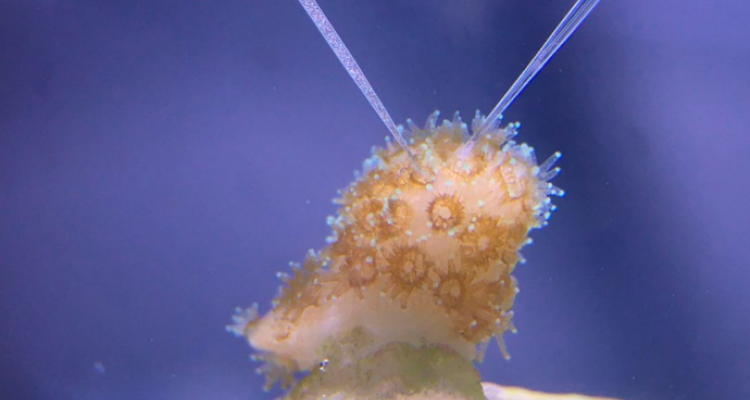
Project
The use of microsensors in coral bleaching research
Coral bleaching, the disruption of the symbiosis between the coral animal and its phototrophic microalgal symbiont, is currently seen as the largest threat to coral reef ecosystems worldwide. Coral bleaching is most often caused by heat (thermal bleaching). The current increase in frequency of mass bleaching events on natural coral reefs is related to global warming.
Thermal bleaching of corals has been hypothesized to be caused by oxidative stress. At higher temperatures, photosynthesis becomes increasingly compromised, which leads overproduction of reactive oxygen species such as superoxide and hydrogen peroxide. Reactive oxygen species (shortly: ROS) can cause damage to living tissue. ROS production during photosynthesis is normally effectively counteracted by antioxidative mechanisms that are present in both the coral host and the algal symbiont, but these antioxidants (particularly those in the coral host) may become overwhelmed during heat stress, causing the coral to expel the symbiont.
So far, there is not direct evidence for the theory of oxidative stress, because ROS are very hard to measure in real time. In this project, we will apply microsensors to measure the production of ROS (in the form of hydrogen peroxide) at the surface of the coral polyp during bleaching, so that we can observe directly whether bleaching is associated with increased accumulation of ROS in the coral tissue.
Microsensors are small electrochemical probes that convert electrochemical reactions of the compound of interest into measurable picoampere currents that represent the concentration of the targeted compound. Due to their small size (the width of tip of the probe is few micrometers), microsensors have a very short response time and are as such very well suited to measure rapid changes in concentrations on a very small scale.